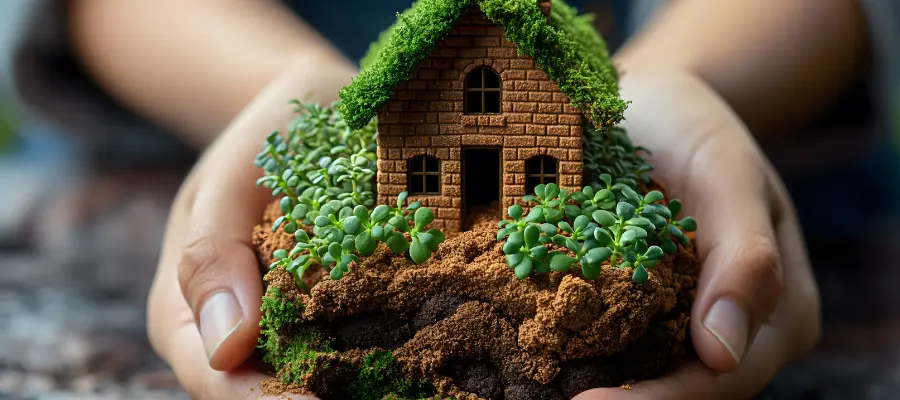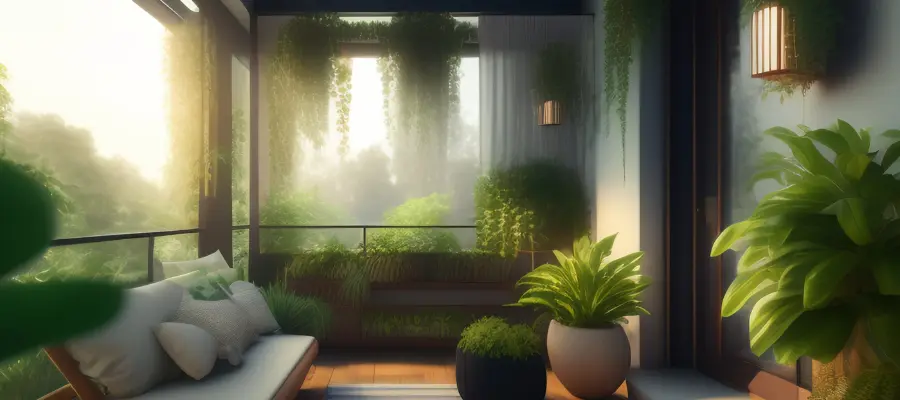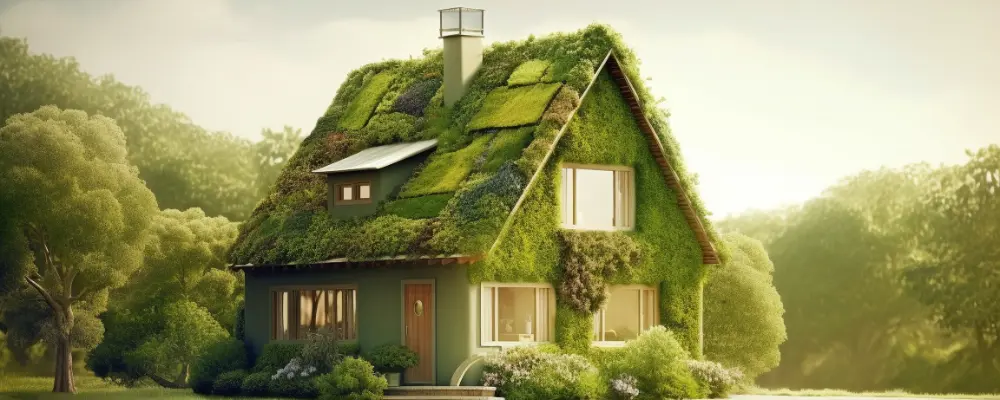Human activities have triggered a cascade of natural disasters like floods and storms, disrupting our world. But within this crisis, lies an opportunity for change. Embracing solutions like environmentally friendly house construction can mitigate our impact and create resilient, harmonious homes.
Eco-friendly home design is not just about environmental care. It’s about economics, as it reduces energy costs and increases property value. Hence, this blog of Brick & Bolt guides you with the various strategies and materials you can use to build an environmentally friendly home.
Tips to Make Eco-Friendly Home Design
The following are the best practices to make environment-friendly homes.
- Energy-Efficient Strategies
- Passive Design In Sustainable Building Practices
- Energy-Efficient Appliances
- Solar Photovoltaic Systems
- Water Conservation Measures
- Rainwater Harvesting
- Efficient Landscaping
- Low-Flow Fixtures
- Sustainable Building Materials
- Recycled and Reclaimed Materials
- Bamboo
- Green Masonry & Eco-Friendly Concrete
- Eco-Friendly Interior Design
- Natural Lighting
- Sustainable Furniture
- Eco-Friendly Textiles
- Indoor Plants
Let’s explore all the tips for making eco-friendly home design:
Energy-Efficient Strategies
Energy efficiency is not just a buzzword, it’s a crucial aspect of eco-friendly home design. By reducing energy consumption, you’re not only cutting down on your bills, but also making a significant contribution to reducing your dependence on non-renewable resources and combating climate change.
Following are some effective techniques to enhance energy efficiency in your home:
1. Passive Design In Sustainable Building Practices
Passive design is one of the most important parts of sustainable building practices. With passive design, your eco-friendly home design will work with local climate conditions to decrease the energy use requirement. Passive design includes strategies like natural ventilation and daylighting, which can all reduce energy demand. This will be done in the building modelling stage of a new construction project with Building Information Modeling (BIM).
2. Energy-Efficient Appliances
You can choose energy-efficient home appliances, which will be an effective way to reduce energy consumption at home. It will be helpful for significant energy cost savings, environmental benefits, and long-term financial gains.
3. Solar Photovoltaic Systems
You can install Solar Photovoltaic systems in construction to yield energy from the Sun. These store power in batteries so you can also have electricity at night. But, consider the house’s orientation before installation to get more exposure to the Sun. You can also sell it back to others if you get more energy.
Water Conservation Measures
Following are a few major water conservation measures
1. Rainwater Harvesting
Rainwater harvesting is a sustainable method used in eco-friendly home design that includes collecting, storing, and using rainwater for various purposes. It is a great way to collect and store rainwater for multiple uses in a house, such as irrigation, washing, and drinking. It will also be a great solution to water scarcity and droughts. With this system, you can save water bills and help conserve water.
2. Efficient Landscaping
Using trees or bushes to shade a building reduces the amount of heating or cooling needed inside. You can arrange plants or trees to block wind from hitting the building directly. With this sustainable landscaping, you’re not just reducing heating and cooling needs but also making a significant contribution to environmental conservation.
3. Low-Flow Fixtures
A low-flow fixture saves water by having a lower flow rate or using less water per flush. You can install low-flow showerheads, faucets, and toilets to use less water without losing performance
Sustainable Building Materials

When building a sustainable home design, you can choose wisely by using the following sustainable construction materials.
Recycled and Reclaimed Materials
It’s a practical and effective approach to promoting sustainability. By using recycled and reclaimed materials for construction( such as steel and reclaimed wood), you decrease the demand for new resources and waste.
Bamboo
Bamboo is a rapidly renewable resource useful for affordable housing, flooring, cabinetry, and other structural elements. It grows quickly and requires less pesticides and fertilizers than traditional timber. It is a more affordable and eco-friendly substitute for conventional building materials.
Green Masonry & Eco-Friendly Concrete
Green concrete is an eco-friendly form of concrete manufactured using waste or residual materials from different industries. It requires less energy for production than traditional concrete types, produces less carbon dioxide, and is considered cheap and more durable. This will reduce the dependence on natural resources and increase the dependency on recyclable materials.
Eco-Friendly Interior Design

The fastest-growing segment in the design industry is sustainable or “green” interior design. This includes innovative eco-friendly decoration practices, as follows.
Natural Lighting:
By increasing natural light, you can reduce the need for artificial lighting, and it’s also good for health. You can use creative ways to bring natural light into your home, such as strategically placing windows and choosing curtains made of thin or light fabrics, which can bring natural light in and reduce energy usage.
Sustainable Furniture:
You can choose a woodwork for your home interior; it’s the most sustainable option. You can opt for eco-friendly options like bamboo or recycled metal. You can also buy multifunctional furniture that can be used for more than one purpose for eco-friendly decoration, like a sofa bed in the living room or a dining table with built-in storage.
Eco-Friendly Textiles:
Upholstery, bedding, and window treatments are very important elements in interior design. Textiles made of organic cotton, hemp, or recycled materials are free from harmful chemicals and better for the environment.
Indoor Plants:
Adding special types of plants to your home decor enhances aesthetics and improves indoor air quality. Plants can absorb pollutants and increase oxygen levels, creating a healthier living environment.
Conclusion
Designing an eco-friendly home involves careful planning and integrating various sustainable practices. By focusing on energy efficiency, water conservation, sustainable materials, and eco-friendly interior design, you can build a home that is not just environmentally responsible but also comfortable and cost-effective. Adopting these guidelines will be helpful in creating a healthier planet and a better quality of life for you and future generations.
Are you interested in building a home with an eco-friendly home design? Then, Brick & Bolt is here. The leading construction company in Jaipur, we can build your green home that aligns with your requirements, along with superior craftsmanship and 470+ quality checks.

